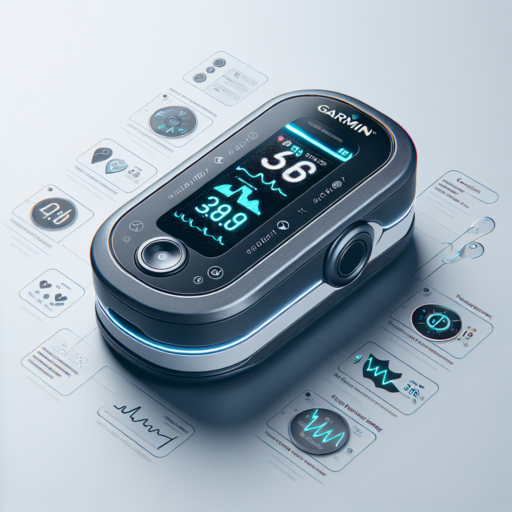What is a normal SpO2 level?
Understanding a normal SpO2 level is essential for assessing one’s overall oxygenation status and health. Oxygen saturation, or SpO2, indicates the percentage of hemoglobin that is saturated with oxygen in the blood. For a healthy individual, a normal SpO2 level typically ranges from 95% to 100%. This indicates an adequate oxygen supply to the body’s cells and tissues, which is essential for maintaining energy levels and ensuring all organs function properly.
It’s important to note that SpO2 readings can vary slightly based on several factors. Individuals at high altitudes may have slightly lower normal readings, while still being considered healthy. Furthermore, individuals with certain medical conditions, such as respiratory or cardiovascular diseases, might also experience variations in their normal SpO2 levels. Regular monitoring and consulting with healthcare professionals can provide personalized insights and adjustments based on individual health scenarios.
In addition to the numerical range, understanding the significance of readings outside the normal spectrum is crucial. An SpO2 level below 95% might be a sign of inadequate oxygenation, known as hypoxemia, which could require medical attention. This underscores the importance of not just knowing one’s SpO2 reading but also understanding the context and the variations within those numbers. Monitoring trends over time, instead of relying on a single measurement, can provide a more comprehensive view of one’s oxygenation status and overall health.
What is a good sp02%?
Understanding what constitutes a good SpO2 percentage is crucial for maintaining optimal health. SpO2 stands for peripheral capillary oxygen saturation, an estimate of the amount of oxygen in the blood. More specifically, it measures the level of oxygenated hemoglobin in the blood.
A healthy SpO2 level typically ranges from 95% to 100%. This range indicates that the majority of your red blood cells are full of oxygen, being transported to your tissues effectively. Levels below 95% might suggest that your body is not getting enough oxygen, a condition known as hypoxemia, which can lead to serious health issues if not addressed properly.
Factors such as altitude, respiratory conditions, and certain physical activities can influence SpO2 levels. For instance, it’s normal for individuals at high altitudes to have slightly lower SpO2 levels due to the thinner atmosphere. However, persistent levels below 95% regardless of these conditions should prompt a visit to a healthcare provider.
Understanding your SpO2 levels can help you gauge your overall health and wellness, identifying potential issues before they become serious. Regular monitoring, especially for individuals with respiratory conditions or those engaged in rigorous physical activity, is essential for maintaining a good quality of life.
No se han encontrado productos.
What is a dangerously low oxygen level?
Determining what constitutes a dangerously low oxygen level is essential for maintaining optimal health and preventing potential health emergencies. Medically, oxygen levels are measured through oxygen saturation, known as SpO2, which indicates the percentage of hemoglobin molecules carrying oxygen in the blood. A SpO2 value below 95% is considered below the normal range for most healthy individuals. However, when these levels drop below 90%, it is generally regarded as a dangerously low oxygen level. This condition, medically referred to as hypoxemia, requires immediate medical attention.
The human body relies on a consistent supply of oxygen to function properly. When oxygen levels fall into the dangerous territory, several critical systems can be jeopardized, leading to a range of adverse effects. Symptoms of dangerously low oxygen levels can include shortness of breath, confusion, rapid heartbeat, and a bluish tint to the lips or fingernails. These symptoms are signals from our body that the organs are not receiving the oxygen they require. Immediate steps should be taken to address these symptoms, as prolonged oxygen deprivation can lead to serious, irreversible complications.
Treatment for dangerously low oxygen levels often involves supplemental oxygen to increase the amount of oxygen in the blood to a safer, more sustainable level. Medical professionals may also seek to address the underlying cause of the oxygen deprivation, which could range from acute conditions like asthma attacks or chronic issues such as COPD (Chronic Obstructive Pulmonary Disease). Monitoring and maintaining safe oxygen levels are crucial interventions for individuals at risk of experiencing hypoxemia.
What is a normal oxygen saturation level by age?
Understanding the normal oxygen saturation level is crucial for maintaining good health, and it’s noteworthy that these levels can vary slightly based on an individual’s age. Oxygen saturation, often measured using a device called a pulse oximeter, indicates the percentage of oxygen-carrying hemoglobin in the blood. For a healthy person, normal levels generally range from 95% to 100%, regardless of their age. However, certain age-related physiological changes can influence these figures.
For newborns, particularly those who are less than 24 hours old, a normal oxygen saturation level might be slightly lower, falling in the range of 90% to 100%. This accounts for the rapid physiological adjustments a newborn must go through outside the womb. As infants grow, their oxygen saturation levels should stabilize within the general norm of 95% to 100%, similar to adults.
In elderly individuals, while the ideal oxygen saturation remains within the same range, various factors such as reduced lung capacity, the presence of chronic respiratory conditions, or cardiovascular issues could potentially affect these levels. Therefore, it’s not uncommon for older adults to occasionally register slightly lower saturation levels without it necessarily indicating a severe health issue. Regular monitoring, however, is advised to ensure these levels stay within a healthy range.




